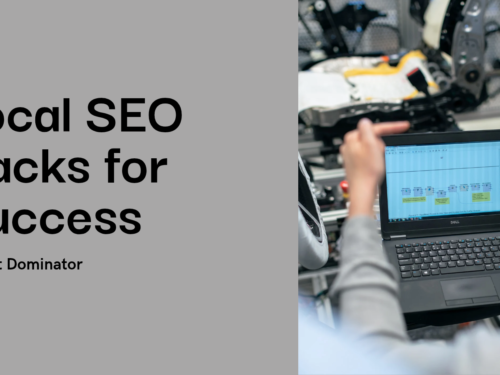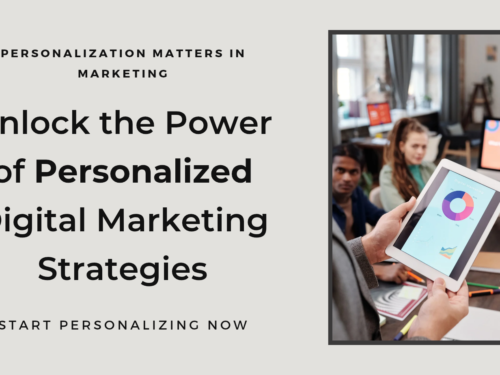081-4797-7173
Pay-Per-Click or PPC advertising has become one of the most effective ways for businesses to reach potential customers quickly. Unlike traditional ads that charge just to be displayed, PPC only costs you when someone clicks on your ad. This makes it a smart, budget-friendly way to drive traffic that actually has an interest in what you’re offering.
But what is the real value in PPC? It’s not just paying for clicks; it’s about seeing results, gaining an edge in crowded markets, and putting your brand in front when your customers need it most. For entrepreneurs and small business owners, PPC gives you access to the same powerful tools that big brands use, without needing a massive budget.
In this guide, we will break down everything you need to know about PPC advertising, how it works, the different types of PPC campaigns and also the benefits and common challenges you’ll face.
What is PPC Advertising?
PPC or Pay-Per-Click advertising is a type of online marketing where businesses create ads that appear on platforms like search engines or social media. What makes PPC great is that you only pay when someone clicks on your ad.
PPC ads come in various forms: text-based search ads, visual display ads, video ads, and more. For example, when you search for something on Google and see the top results marked as ‘Ad’, those are PPC ads.
They’re also targeted based on specific keywords that align with what users are searching for. Social media platforms like Facebook and Instagram also utilise PPC models that allow businesses to display ads to people based on their interests, demographics, and online behaviour.
How PPC Advertising Works
To understand how PPC advertising works, think of it as a bidding system. When you create a PPC campaign, you’re essentially competing with other advertisers for prime ad space.
Here’s how the process typically works:
Every time someone enters a search query, an auction is triggered. Advertisers bid on specific keywords related to their business or offerings.
Therefore, the bid represents the maximum amount they’re willing to pay for a click. However, winning the auction isn’t solely about who bids the most; it’s a mix of bid amount and the quality and relevance of the ad.
Keywords are at the heart of PPC advertising. Choosing the right keywords is essential because they determine when and where your ad will appear. Successful PPC campaigns require thorough keyword research to find terms that balance relevance, search volume, as well as competition.
Platforms like Google Ads consider your ad’s quality score. This score is based on the relevance of your ad to the keywords you’re targeting, the quality of your landing page, as well as the expected click-through rate (CTR).
A higher quality score can help lower the cost-per-click (CPC) and improve your ad’s placement, even if your bid isn’t the highest.
Your ad’s position is determined by ad rank, which is a combination of your maximum bid and your quality score. In essence, the better your quality score and the more competitive your bid, the higher your ad will appear on the results page.
Types of PPC Advertising
PPC advertising comes in different forms, each personalised to meet specific goals as well as audience preferences.
Here are the main types of PPC advertising that entrepreneurs and business owners should be familiar with:
1. Search Ads
Search ads are the most common type of PPC advertising and they appear at the top or bottom of search engine results pages. They are primarily text and show up when users search for specific keywords.
This type of PPC is great for businesses looking to target potential customers searching for their products or services.
2. Display Ads
Display ads are more visual and appear across webpages rather than in search results. These ads can include images, banners, or rich media and are excellent for building brand awareness and reaching users as they browse various websites.
Additionally, display ads can be targeted based on interests, topics, or specific placements, making them a versatile option for reaching broader audiences.
3. Shopping Ads
Shopping ads are perfect for e-commerce businesses looking to showcase their products directly in the search results. These ads often feature product images, prices, and descriptions, allowing potential customers to see details at a glance.
For example, searching for “sports shoes” may bring up a carousel of product ads from different retailers. This type of ad can drive highly targeted traffic because users can compare products right in the search engine.
4. Video Ads
Video ads can appear before, during, or after video content, as well as in search results within video platforms. They are effective for storytelling, demonstrating products, or sharing customer testimonials.
With more people engaging in video content daily, this format offers a dynamic way to grab attention and also build trust.
5. Retargeting/Remarketing Ads
Retargeting or remarketing ads are designed to reach users who have previously interacted with your website or content but haven’t completed a desired action, such as making a purchase.
These ads are displayed to remind users of your business as they continue browsing online. This method is known for improving conversion rates, as it keeps your brand top-of-mind and encourages users to return and take action.
Benefits of PPC Advertising
PPC advertising offers a wide range of benefits for entrepreneurs and business owners looking to boost their online presence and reach their target audience effectively.
Here are some of the most significant advantages:
1. Immediate Visibility and Traffic
One of the standout benefits of PPC advertising is its ability to generate instant visibility. Unlike SEO, which can take months to yield results, PPC ads can get your brand in front of potential customers as soon as your campaign goes live.
2. Targeted Advertising
PPC allows for precise targeting options that enable you to reach the right audience. You can tailor your ads based on demographics, location, device type, interests, and even time of day.
Therefore, you can maximise your ad spend by only showing your ads to users who are most likely to engage with your content, resulting in higher conversion rates.
3. Budget Control
PPC campaigns offer unparalleled flexibility in budgeting. In addition to that, you have full control over how much you spend daily or for the entire campaign.
Additionally, with the pay-per-click model, you’re only charged when someone interacts with your ad, ensuring that your money is spent effectively.
4. Detailed Performance Tracking and Data Insights
One of the major advantages of PPC advertising is the wealth of data you receive. With PPC, you can track every aspect of your campaign’s performance including: impressions, clicks, conversions, and more.
5. Enhancing Brand Recognition
Even if users don’t click on your ads, seeing your business appear at the top of search results helps boost brand recognition. The more your ads are seen, the more familiar users become with your brand, making them more likely to trust you and return when they’re ready to make a purchase or need your service.
Common Challenges and How to Overcome Them
PPC advertising is not without challenges. Entrepreneurs and businesses often face challenges that can affect the success of their campaigns.
Here are some common issues and tips for overcoming them:
1. High Competition and Cost
One of the most significant challenges with PPC advertising, especially for competitive industries, is the cost. Popular keywords can drive up bids making it difficult for small businesses to compete with larger companies that have bigger budgets. This can lead to higher costs-per-click (CPC) and reduced ROI.
Solution: Focus on niches that have less competition but are still relevant to your business. These keywords often have a lower CPC and can attract a highly targeted audience.
Additionally, ensure your quality score is optimised, as a higher quality score can help lower CPC and improve your ad’s position without increasing your bid.
2. Click Fraud and Invalid Clicks
Click fraud occurs when individuals or bots click on your ads with no intention of engaging, driving up costs without any return. This can be frustrating and costly for businesses working within a limited budget.
Solution: Use click fraud detection tools or work with advertising platforms that have built-in protections against invalid clicks. Regularly monitor your campaigns for unusual activity and report suspicious behaviour to your advertising platform to avoid wasting budget on fraudulent clicks.
3. Poor Ad Performance
A common issue many businesses face is ads not performing as expected, leading to fewer clicks and conversions. This can be from a lack of ad relevance, poor keyword selection, or inadequate ad copy.
Solution: Test different versions of your ad copy to see which one resonates best with your audience. Ensure that your keywords align closely with your ad’s message.
Also ensure that your landing page provides a good user experience that follows through on the promise of the ad. Lastly, continuously monitor your campaign’s performance and make necessary adjustments based on data insights.
Best Practices for a Successful PPC Ad Campaign
To make the most of your PPC efforts and maximise your return on investment, it’s important to follow some strategies that enhance campaign effectiveness. Here are some essential best practices to keep in mind:
1. Conduct Comprehensive Keyword Research
Keywords are the foundation of any PPC Ad campaign, so taking the time to conduct thorough keyword research is crucial. Use tools like Google Keyword Planner, Ahrefs, or SEMrush to find high-intent keywords.
Additionally, long-tail keywords may have lower search volumes but often come with less competition and a higher likelihood of conversion.
2. Optimise Ad Copy for Relevance and Engagement
Creating compelling ad copy that clearly conveys the benefits of your product or service and includes a call-to-action. Also, make sure your ad headlines and descriptions are relevant to the keywords you’re targeting.
Including keywords in your ad copy can improve your ad’s relevance and quality score, increasing the chances of a better position at a lower cost.
3. Create High-Quality, Mobile-Friendly Landing Pages
Your landing page is where the user ends up after clicking your ad, so it should provide a seamless and engaging experience that reflects the promise of the ad.
Ensure your landing page is mobile-friendly, loads quickly, and is designed for conversion.
4. Regularly Monitor and Adjust Your Campaigns
To keep your campaigns performing at their best, regular monitoring is essential. Be prepared to make adjustments, such as pausing underperforming keywords or reallocating budget to better-performing campaigns.
5. Utilise A/B Testing
A/B testing or split testing allows you to experiment with different elements of your PPC ads. These include headlines, ad copy, images, or CTAs, to see what resonates best with your audience.
This method helps identify what drives higher engagement as well as conversions.
Conclusion
PPC advertising is an incredibly powerful tool for entrepreneurs and business owners looking to drive traffic, increase sales, and grow their brand’s presence online. However, running a successful PPC campaign requires strategy, continuous monitoring, and the right tools.
And remember, PPC is not just about getting clicks; it’s about driving conversions and making sure your ads reach the right people at the right time. Leave us a comment below with your thoughts, questions, or experiences with PPC advertising.
0






